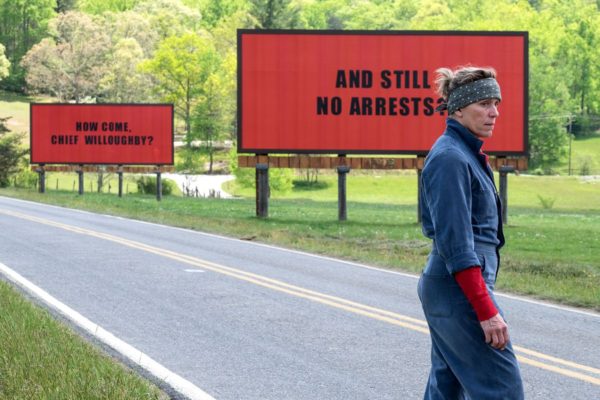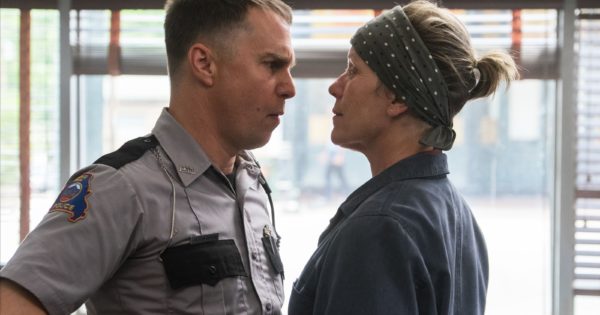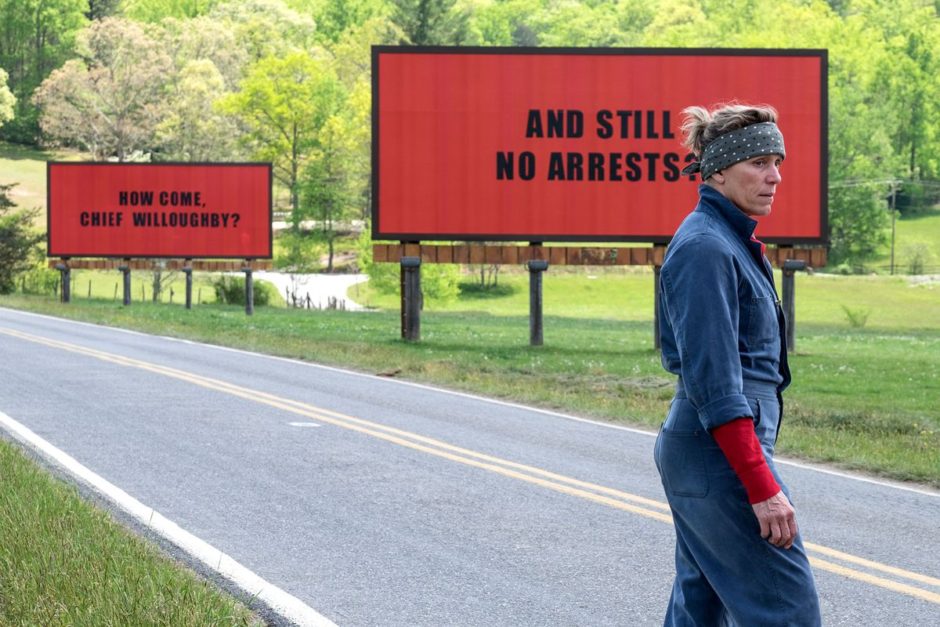Three weathered billboards line a lonely stretch of road near an unremarkable town in middle America. They’re grist for Martin McDonagh’s mill in Three Billboards Outside Ebbing, Missouri, a meditative, gloomy and utterly unconventional film about the nature of grief, vengeance and violence.

Having driven past these signs countless times, Mildred Hayes (Frances McDormand), a resident of Ebbing, decides to rent them for a year. The inscriptions on them read: How Come, Chief Willoughby?, And Still No Arrests? and Raped While Dying.
Hayes, the owner of a gift shop, is angry and tormented and mired deep in sorrow. Her daughter, Angela, was kidnapped, raped and murdered a few months ago, and the local police force still has no leads about the murderer. Hayes, intent on pushing the cops to solve this cold case, hopes the provocative language on the billboards will finally prod them into action.

McDormand, looking plain, unadorned and focused, portrays Hayes with drive and passion. Her loss has aroused empathy, but her tactic has elicited little more than hostility. Policeman Jason Dickson (Sam Rockwell), claiming the billboards are defaming his colleagues, demands the removal of the inscriptions. She steadfastly refuses.
The police chief, Willoughby (Woody Harrelson), a level-headed fellow who has terminal cancer, assures Hayes he did everything possible to find the killer, but she doesn’t buy his story. She’s convinced the police gave up too soon.
Even a local clergyman exerts pressure on Hayes to defer to the police. “Nobody is with you on this,” he says.

When Hayes visits a dentist, he vents the town’s anger on her. She quickly retaliates. It’s a scene rife with tension and mutual animosity.
Hayes’ ex-husband, Charlie (John Hawkes), who’s dating a 19-year-old airhead, is also among those who believe she shouldn’t have launched a crusade against the police. Their bickering spins out of control as Hayes’ son (Lucas Hedges) pulls out a knife and holds it to his father’s throat. This is clearly a dysfunctional family.
In the next few scenes, a cop commits suicide, another one goes berserk and loses his job, an African American police chief comes on board, Hayes is confronted by a menacing goon who taunts her about the homicide, the billboards are set on fire, Hayes commits a felony, and Dickson aligns himself with Hayes in an attempt to track down Angela’s murderer.
It’s an explosive mix replete with odd and eccentric characters, and it bursts upon the screen with a rush of adrenaline.
